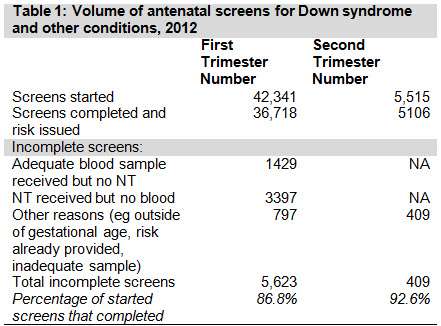- Home
- News
- Screening Matters, Issue 45, April 2014
- Screening for Down syndrome and other conditions - information for practitioners
News
- Screening Matters Newsletter
- April 2019
- April 2018
- December 2017
- August 2017
- April 2017
- December 2016
- October 2016
- March 2016
- November 2015
- August 2015
- June 2015
- April 2015
- February 2015
- December 2014
- October 2014
- August 2014
- June 2014
- April 2014
- February 2014
- December 2013
- October 2013
- August 2013
- June 2013
- April 2013
- February 2013
Screening Matters
The National Screening Unit newsletter
In this issue:
- Newborn hearing screening picks up profound hearing loss
- Health literacy study has learnings for cervical screening
- NCSP coverage rate nears 80 percent target
- Newborn Metabolic Screening Programme Monitoring Update
- Screening for Down syndrome and other conditions - information for practitioners
- Pacific Radiology new Southern district breast screening provider
- NCSP monitoring reports now available
- National breast cancer conference in June
Screening for Down syndrome and other conditions - information for practitioners

The screening options include:
- first trimester combined screening (nuchal translucency (NT) ultrasound scan and maternal serum) or
- second trimester screening (maternal serum).
For every 1000 women having screening, approximately 50 will receive an increased risk result and approximately two will be diagnosed with a baby with Down syndrome or another condition.
One of the areas that is reported and monitored is the number of women not completing screening. When women have a NT ultrasound scan in the first trimester, they are entering into the screening pathway, which includes information from the ultrasound, demographic information and a maternal serum (blood test) to generate a risk result.
Table 1 shows volumes for first and second trimester for the 2012 year and the numbers of incomplete screens. A high number of incomplete screens for the first trimester were due to an NT ultrasound scan being received by the laboratory but no maternal serum and vice versa. This equates to around 6000, or 13 percent of women who commenced screening but did not complete screening and did not have a risk result calculated.
Practitioners can support women by talking with them about the screening pathway and what it means to have an NT ultrasound scan. The scan can detect anomalies, is combined with maternal serum and is part of antenatal screening for Down syndrome and other conditions.
If a maternal serum has been received by the screening laboratory, a letter is sent to the practitioner to inform them that the woman has started on the screening pathway and that an NT ultrasound scan is still to be received. At 13+ weeks if a scan has not been received, the screening laboratory phones the practitioner to find out if a scan has been performed. If the practitioner fills out the request form and includes where the scan may be performed (the green shaded area at the bottom of the laboratory request form), the laboratory can ring the radiology practice directly.

For further information on this screening please visit www.nsu.govt.nz. Practitioner guidelines can be found here.
For further information from the screening laboratories contact:
LabPLUS at Auckland District Health Board (Taupo and North)
0800 LABPLUS
Canterbury Health Laboratories at Canterbury District Health Board (south of Taupo)
0800 THELAB
To receive the Screening Matters newsletter by email, fill out our sign-up form.

